 Last week, HL7 held it’s annual plenary meeting in Baltimore at the Hyatt Regency...For the FHIR project, our main attention was the ballot. Across the core standard, and multiple implementation guides, we received >800 detailed comments as part of the ballot. This represents a slight increase over the last ballot, but there was a clear change in the focus of the comments – there was a significant drop in the number of comments relating to the infrastructure, and much more focus on the domain content, and it’s applicability to real world problems. This is a clear marker of the growing maturity of the standard. We continue to expect that we’ll publish FHIR release 3 at the end of this year.
Last week, HL7 held it’s annual plenary meeting in Baltimore at the Hyatt Regency...For the FHIR project, our main attention was the ballot. Across the core standard, and multiple implementation guides, we received >800 detailed comments as part of the ballot. This represents a slight increase over the last ballot, but there was a clear change in the focus of the comments – there was a significant drop in the number of comments relating to the infrastructure, and much more focus on the domain content, and it’s applicability to real world problems. This is a clear marker of the growing maturity of the standard. We continue to expect that we’ll publish FHIR release 3 at the end of this year.
 The Department of Health and Humans Services’ Office of the National Coordinator for Health Information Technology (ONC) today announced the Phase 2 winners of the Move Health Data Forward Challenge. Winning submissions will now move on to the challenge’s last phase to develop applications that will allow individuals to share their personal health information safely and securely with their health care providers, family members or other caregivers...
The Department of Health and Humans Services’ Office of the National Coordinator for Health Information Technology (ONC) today announced the Phase 2 winners of the Move Health Data Forward Challenge. Winning submissions will now move on to the challenge’s last phase to develop applications that will allow individuals to share their personal health information safely and securely with their health care providers, family members or other caregivers...
 Google has thrown its hat into the EHR ring by joining the team led by PwC which is proposing that the Department of Defense (DoD) upgrade their current EHR to Defense Operational Readiness Health System (DORHS), a customized application built for the DoD and based on VistA, the open source EHR developed by the U.S. Department of Veterans Affairs (VA)...Google’s participation has enormous implications for both the DoD’s EHR and to the healthcare industry as a whole. By choosing the open source EHR team, Google...has sent a clear message to the world that VistA is the best option for the DoD.
Google has thrown its hat into the EHR ring by joining the team led by PwC which is proposing that the Department of Defense (DoD) upgrade their current EHR to Defense Operational Readiness Health System (DORHS), a customized application built for the DoD and based on VistA, the open source EHR developed by the U.S. Department of Veterans Affairs (VA)...Google’s participation has enormous implications for both the DoD’s EHR and to the healthcare industry as a whole. By choosing the open source EHR team, Google...has sent a clear message to the world that VistA is the best option for the DoD. ...recently, the ONC Interoperability Roadmap, recognizing that the building blocks of universal interoperability could not be so neatly erected, leans on the idea of “coordinated governance” of networks. While these frameworks have paid homage to the concept of nationwide network as a “network of networks”, we have yet to crisply define the stitching needed to form this nationwide network quilt. This issue hasn’t been so pressing up until now because there were relatively few networks – the “last mile” problem was the bigger concern. Network formation is evolving rapidly, however, which has made more pressing the question of what it means to connect networks in a uniform way.
...recently, the ONC Interoperability Roadmap, recognizing that the building blocks of universal interoperability could not be so neatly erected, leans on the idea of “coordinated governance” of networks. While these frameworks have paid homage to the concept of nationwide network as a “network of networks”, we have yet to crisply define the stitching needed to form this nationwide network quilt. This issue hasn’t been so pressing up until now because there were relatively few networks – the “last mile” problem was the bigger concern. Network formation is evolving rapidly, however, which has made more pressing the question of what it means to connect networks in a uniform way.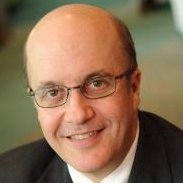 The health IT interoperability area is so confused now that we really need to look to some very practical examples of where interoperability has been solved, at least at an entry-level, and stop some of the hand-wringing, angst, and casting about. The federal government moving into the next administration and the post – Meaningful Use era, particularly needs to focus its attention and programs to develop "entry-level" interoperability to justify the public's 30 billion dollar EHR investment and make EHR data serve broader health outcomes for patients and populations...
The health IT interoperability area is so confused now that we really need to look to some very practical examples of where interoperability has been solved, at least at an entry-level, and stop some of the hand-wringing, angst, and casting about. The federal government moving into the next administration and the post – Meaningful Use era, particularly needs to focus its attention and programs to develop "entry-level" interoperability to justify the public's 30 billion dollar EHR investment and make EHR data serve broader health outcomes for patients and populations... The evolution of fax from paper-based to cloud transmission and storage (CloudFax) is a key step that enables CloudFax providers to comply with HIPAA and other regulations. Further strengthening of CloudFax as a key component in Healthcare Information Systems (HIS) will be its evolution into a Direct Messaging platform that enables the seamless exchange of Patient Health Information (PHI) between the diverse data and document management systems used by labs, pharmacies, doctor's offices, hospitals, and billing providers. CloudFax will support and contribute to the goals of interoperability. Consider:
The evolution of fax from paper-based to cloud transmission and storage (CloudFax) is a key step that enables CloudFax providers to comply with HIPAA and other regulations. Further strengthening of CloudFax as a key component in Healthcare Information Systems (HIS) will be its evolution into a Direct Messaging platform that enables the seamless exchange of Patient Health Information (PHI) between the diverse data and document management systems used by labs, pharmacies, doctor's offices, hospitals, and billing providers. CloudFax will support and contribute to the goals of interoperability. Consider: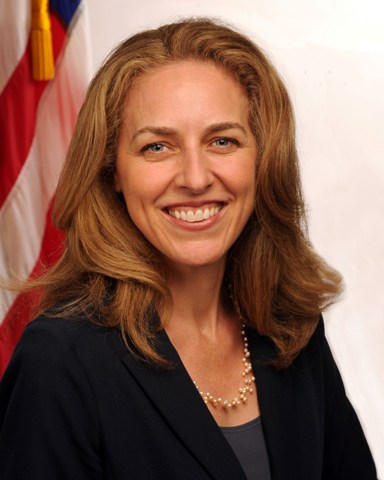 Every spring, our team in the HHS IDEA Lab gears up for our biggest event of the year: the Health Datapalooza. It’s an annual celebration of the power of data that was started by my predecessor, Todd Park, in 2010. This year, we were honored to hear from an extraordinary lineup of leaders from private industry, academia and the federal government, including Vice President Biden. I thought I’d share excerpts from three of my colleagues’ speeches, to give people a sense of the scope and depth of the discussions.
Every spring, our team in the HHS IDEA Lab gears up for our biggest event of the year: the Health Datapalooza. It’s an annual celebration of the power of data that was started by my predecessor, Todd Park, in 2010. This year, we were honored to hear from an extraordinary lineup of leaders from private industry, academia and the federal government, including Vice President Biden. I thought I’d share excerpts from three of my colleagues’ speeches, to give people a sense of the scope and depth of the discussions. Hardly a day goes by without some new revelation of an information technology (IT) mess in the United States that seems like an endless round of the old radio show joke contest, “Can You Top This” except that increasingly the joke is on us. From nuclear weapons updated with floppy disks, to critical financial systems in the Department of the Treasury that run on assembler language code (a computer language initially used in the 1950s and typically tied to the hardware for which it was developed), to medical systems that cannot exchange patient records leading to a large number of needless deaths from medical errors.
Hardly a day goes by without some new revelation of an information technology (IT) mess in the United States that seems like an endless round of the old radio show joke contest, “Can You Top This” except that increasingly the joke is on us. From nuclear weapons updated with floppy disks, to critical financial systems in the Department of the Treasury that run on assembler language code (a computer language initially used in the 1950s and typically tied to the hardware for which it was developed), to medical systems that cannot exchange patient records leading to a large number of needless deaths from medical errors. Lockheed Martin has entered into a definitive agreement to acquire Systems Made Simple, a leading provider of health information technology solutions to the U.S. federal government...“Technology is rapidly transforming the healthcare landscape in the United States, and is critical to reducing costs and improving patient care,” said Lockheed Martin Chairman, President and CEO Marillyn Hewson. “Systems Made Simple’s capabilities in engineering health technology solutions are a natural extension of our existing health IT portfolio, and will enable us to deliver a broader portfolio of capabilities to meet our healthcare customers’ current and future needs.”
Lockheed Martin has entered into a definitive agreement to acquire Systems Made Simple, a leading provider of health information technology solutions to the U.S. federal government...“Technology is rapidly transforming the healthcare landscape in the United States, and is critical to reducing costs and improving patient care,” said Lockheed Martin Chairman, President and CEO Marillyn Hewson. “Systems Made Simple’s capabilities in engineering health technology solutions are a natural extension of our existing health IT portfolio, and will enable us to deliver a broader portfolio of capabilities to meet our healthcare customers’ current and future needs.” Our team prides itself on using cutting edge software technologies that maximize everything from interoperability to speed, integration, reliability, and usability. We use Angular.js to build our user Interface. Angular.js is a technology that was invented at Google and used by Google for its own products. We use Node.js for the serverside logic. Node.js allows us to provide incredibly fast transactions and again, use technology from this decade, unlike other health IT solutions. Node.js is growing at an exponential rate in industry – well, other industries, not healthcare.
Our team prides itself on using cutting edge software technologies that maximize everything from interoperability to speed, integration, reliability, and usability. We use Angular.js to build our user Interface. Angular.js is a technology that was invented at Google and used by Google for its own products. We use Node.js for the serverside logic. Node.js allows us to provide incredibly fast transactions and again, use technology from this decade, unlike other health IT solutions. Node.js is growing at an exponential rate in industry – well, other industries, not healthcare.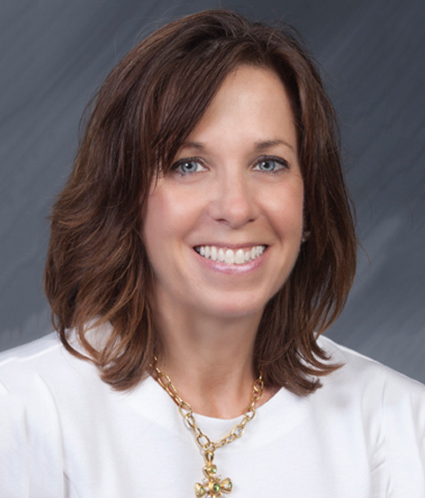 Last week I had the esteemed privilege of attending the EHR Interoperability Meeting at the White House with Seema Verma, CMS Administrator, and Don Rucker MD, National Coordinator at ONC. The attendees represented payer organizations, and the discussion was focused on the barriers to interoperability and how we can band together to overcome them. Below are my responses to the major questions asked of each payer. As you read through this information, I hope it further clarifies our position on these topics.
Last week I had the esteemed privilege of attending the EHR Interoperability Meeting at the White House with Seema Verma, CMS Administrator, and Don Rucker MD, National Coordinator at ONC. The attendees represented payer organizations, and the discussion was focused on the barriers to interoperability and how we can band together to overcome them. Below are my responses to the major questions asked of each payer. As you read through this information, I hope it further clarifies our position on these topics.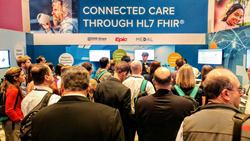 According the the Office of the National Coordinator, roughly 30% of providers have no Health Information Exchange outside of faxing. Medal’s innovative technology “meets providers where they are." Medal makes it easy to share data with its product “print to FHIR." Medal software replaces existing fax-based workflows and streamlines health information sharing, creating opportunities to improve health care, reduce effort, and assist research. Medal also connects to existing health information systems such as EMRs and HIEs using FHIR -- “Fast Healthcare Interoperability Resources” -- a quickly emerging standard for health information sharing.
According the the Office of the National Coordinator, roughly 30% of providers have no Health Information Exchange outside of faxing. Medal’s innovative technology “meets providers where they are." Medal makes it easy to share data with its product “print to FHIR." Medal software replaces existing fax-based workflows and streamlines health information sharing, creating opportunities to improve health care, reduce effort, and assist research. Medal also connects to existing health information systems such as EMRs and HIEs using FHIR -- “Fast Healthcare Interoperability Resources” -- a quickly emerging standard for health information sharing.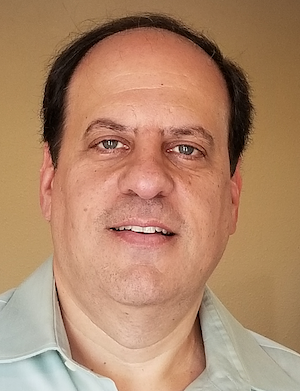 In August 2022 the Office of the National Coordinator for Health Information Technology (ONC) launched the 2022 Public Health Data Systems Task Force as a subcommittee of the Health Information Technology Advisory Committee (HITAC). The task force will meet through the beginning of November to present recommendations continuing and building upon the work of the 2021 task force. Members of the task force include individuals from various levels of government, relevant public health associations, and industry partners.
In August 2022 the Office of the National Coordinator for Health Information Technology (ONC) launched the 2022 Public Health Data Systems Task Force as a subcommittee of the Health Information Technology Advisory Committee (HITAC). The task force will meet through the beginning of November to present recommendations continuing and building upon the work of the 2021 task force. Members of the task force include individuals from various levels of government, relevant public health associations, and industry partners.